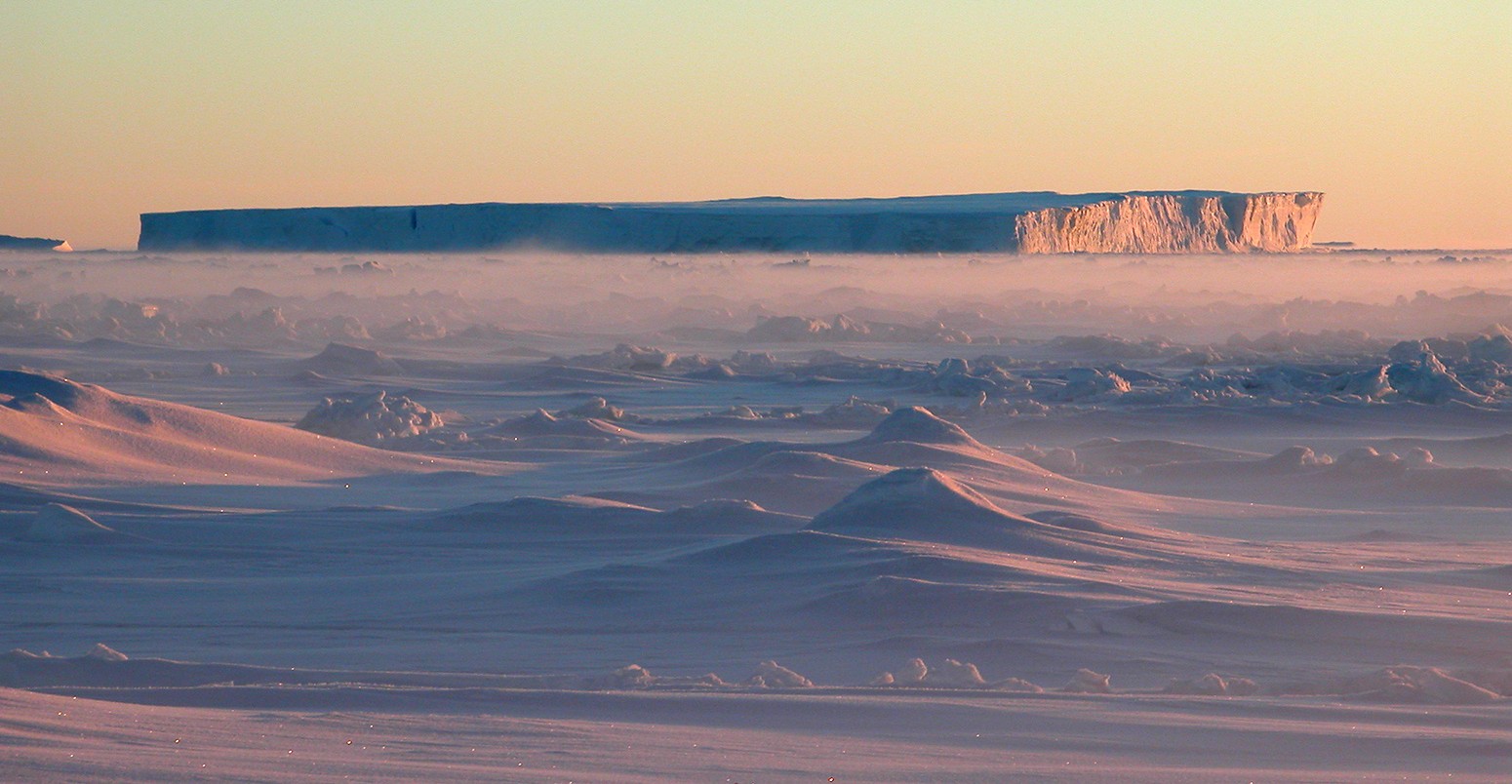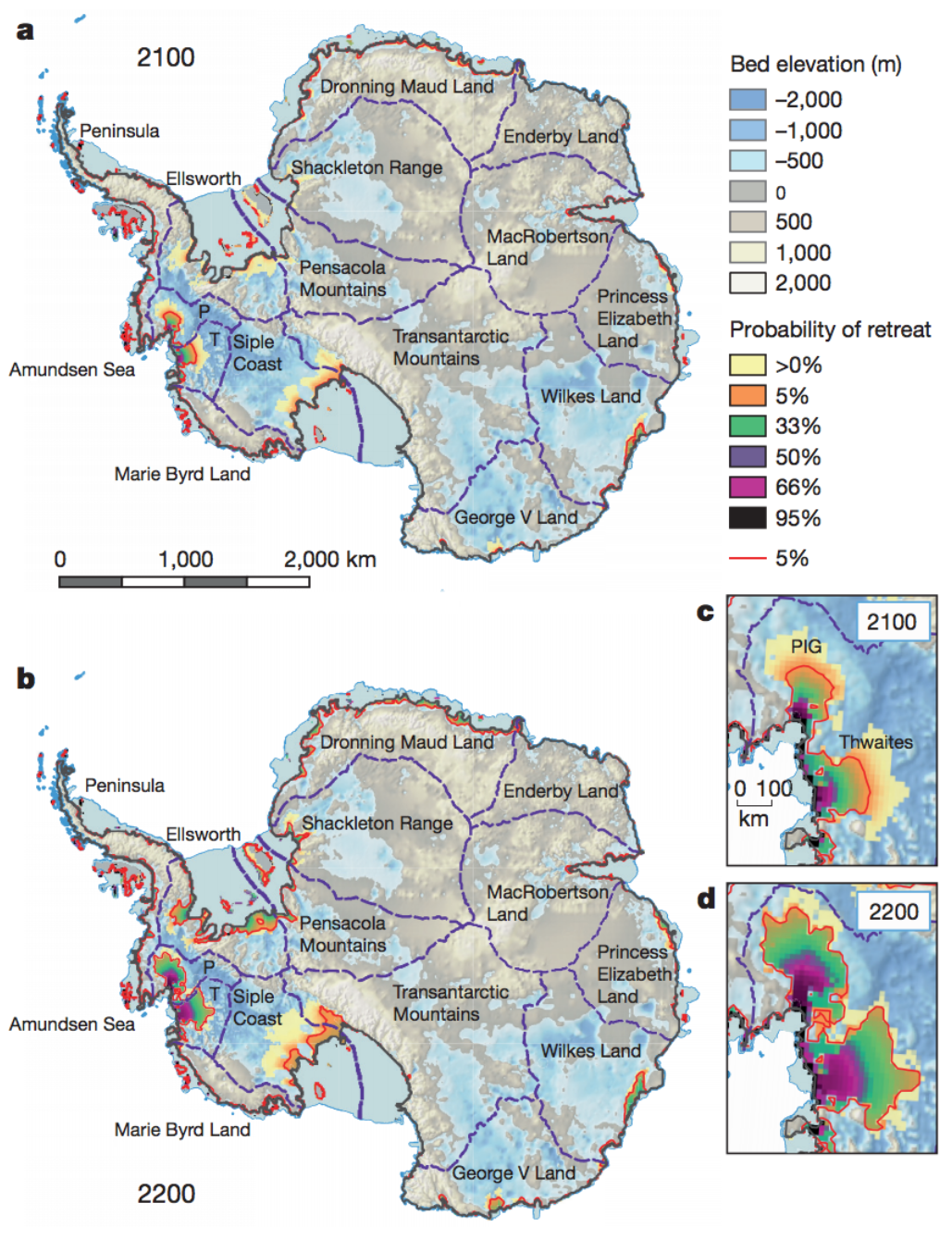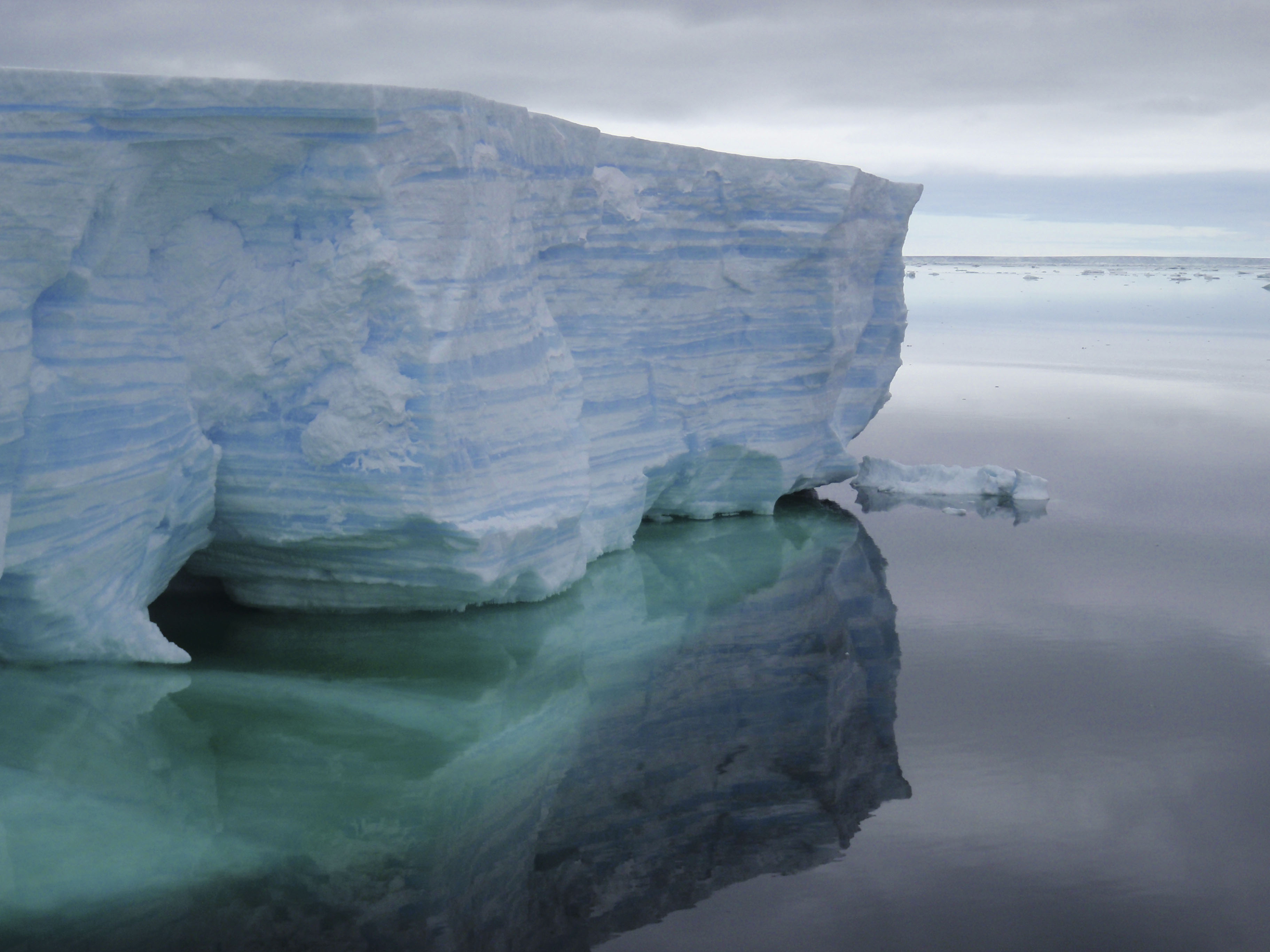
Melting Antarctic ice sheets could add up to 30cm to sea levels by 2100
Robert McSweeney
11.18.15Robert McSweeney
18.11.2015 | 6:00pmWhen projecting how sea levels could rise over the coming centuries, one of the most difficult factors for scientists to gauge is how much of the Earth’s vast ice sheets will melt, and how quickly.
A new study combines the latest observations with an ice sheet model to estimate that melting ice on the Antarctic ice sheet is likely to add 10cm to global sea levels by 2100, but it could be as much as 30cm.
New assessment
The regions of the Antarctic ice sheet scientists think are most vulnerable to melting are “marine-based” glaciers, which sit on land that’s below sea level. Where the face of a glacier meets the ocean, warm water can melt it from underneath, gradually forcing back the “grounding line” where the glacier sits on the land.
Around 75% of the West Antarctic ice sheet, and 35% of the East Antarctic, is marine-based. Recent research suggests that the long-term collapse of several marine-based glaciers in the West Antarctic has already started.
Losing the whole West Antarctic ice sheet would eventually add three metres to global sea levels, but scientists aren’t yet sure how soon this could happen.
In its latest assessment report, the Intergovernmental Panel on Climate Change (IPCC) concluded that there wasn’t sufficient evidence available to put an exact number on how much the collapse of marine-based ice sheets could add to sea levels by 2100. However, it does say that if the collapse is underway, the contribution of ice sheets would not “exceed several tenths of a metre during the 21st century”.
In the new study, published today in Nature, researchers have come up with a new assessment based on the latest evidence. The paper is one of the outputs from the Ice2Sea programme, an international venture managed by the British Antarctic Survey to improve understanding of how land-based ice will respond to climate change.
Glacier retreat
To produce their estimates, the researchers first assigned each one of 11 regions of Antarctica a likelihood that its glaciers would retreat by 2100 or 2200. For this they used the latest observations of how glacier grounding lines have been changing.
Co-author Prof Tony Payne, a professor of glaciology from the University of Bristol, explains to Carbon Brief:
For instance, if a particular sector has been shown to potentially experience ocean warming in the future – one of the main triggers to grounding line retreat – we would assign a relatively high probability; while a sector already experiencing grounding line retreat would have a very high probability.
The researchers then ran their ice sheet model to simulate how the glaciers responded to global temperature rise under a medium-high emissions scenario.
The results suggest a most likely contribution from Antarctic glaciers to sea levels of 10cm by 2100, up to a maximum of 30cm. This is slightly higher than the IPCC’s estimate under the same emissions scenario of 7cm by 2100. The IPCC’s overall estimate of global sea level rise, which includes all the other factors that affect sea levels, such as melt from Greenland’s ice sheets and the oceans expanding as they warm, is 60cm by 2100 (with a likely range of 42 to 80cm). For the IPCC’s highest emissions scenario, the top end of the range goes up to 0.98m.
The bold shading in the maps below shows the likelihood of glacier retreat across the different regions by 2100 (upper map) and 2200 (lower map). You can see parts of the West Antarctic have a 66% chance of retreat (purple shading) and even 95% (black).
The region likely to contribute the most to sea levels are the glaciers that feed into the Amundsen Sea, the paper says. The glaciers in the Thwaites region (see maps c and d below) make up more than half of this contribution.

Maps of projected glacier retreat by a) 2100 and b) 2200. Maps c) and d) show close-ups of Amundsen Sea region of West Antarctica. Bold shading shows likelihood of glacier retreat, while pale shading shows elevation of the land underlying the ice. Source: Ritz et al. (2015)
Things get more complicated looking into the 22nd century, Payne says. The model gives two potential outcomes: one where the contribution to sea levels tails off to around 6cm by 2200, and a second where it accelerates to around 50cm, and a possible maximum of 72cm.
The inconclusive results stem from uncertainties in the model about how quickly the ice will slide over land and into the ocean, Payne says.
‘We keep getting surprised’
While some earlier studies, using different approaches, have posited that Antarctic ice sheets could add as much as a metre to sea levels by 2100, this new evidence suggests ice loss on this scale is “implausible”, the paper says.
The new findings show that for ice to be lost that quickly from Antarctica, one of two things would have to happen, says Payne. Either the glaciers would have to flow into the ocean at unrealistic rates, or rapid melting would have to be triggered over a much larger area of the ice sheet than current evidence suggests.
The new estimates are reasonable considering the rates of glacier change scientists are seeing at the moment, says Dr Ted Scambos, lead scientist at the National Snow and Ice Data Center, who wasn’t involved in the study. But ice sheets keep throwing up surprises, he tells Carbon Brief:
Four years ago, we thought that Thwaites [glacier] was relatively insensitive to change, because of a bedrock ridge – a fence if you will – holding it back. Then we discovered a gap to one side of the fence – and the ice discovered it too, and began to accelerate in an ‘end-around’ fashion.
This prompted a number of papers in the last 18 months suggesting the collapse of the West Antarctic ice sheet was already underway – which it probably is, Scambos adds.
The new study shows that scientists are getting to grips with understanding changes in marine-based ice sheets, Scambos says. But bigger contributions to sea levels are harder to envisage because we haven’t experienced anything of that scale, he adds:
There are several paths to scary upward rates… They are just hard to fully imagine given that we’ve never seen anything like it. Hopefully [Mother] Nature will be kind enough to show us a few small examples before the big surprises occur.
Ritz, C. et al. (2015) Potential sea level rise from Antarctic ice sheet instability constrained by observations, Nature, doi:10.1038/nature16147
Main image: A tabular iceberg at sunset in Pine Island Bay, Antarctica. Credit: Mark Brandon, Open University.
-
Melting Antarctic ice sheets could add up to 30cm to sea levels by 2100
-
Melting ice on the Antarctic ice sheet is likely to add 10cm to global sea levels by 2100


